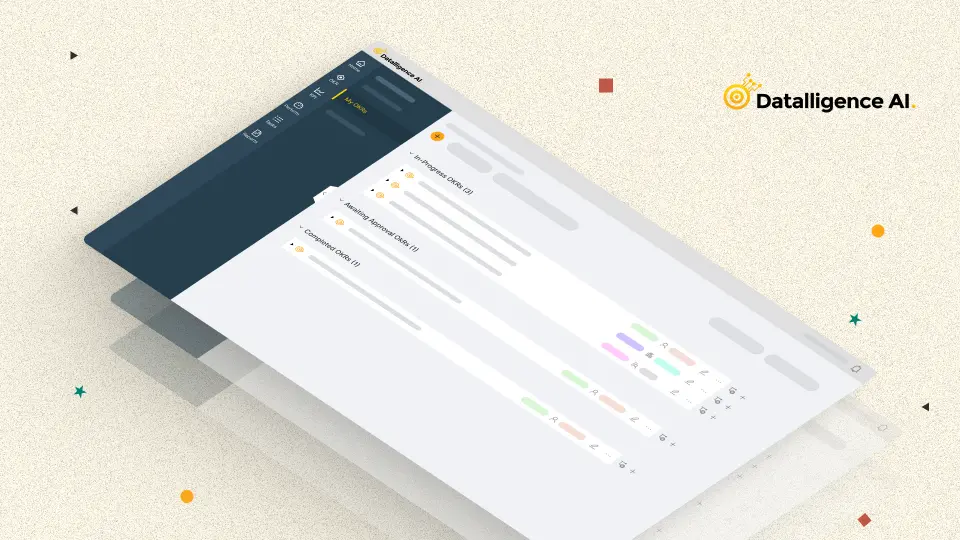It has been found that companies are more concerned with increasing efficiency and succeeding in today’s competitive business environment. The performance management process is one of the major areas for achieving the goals. Therefore, setting up performance goals that are specific and measurable can improve an individual’s work performance, motivation, and overall success. The following article will introduce 15 performance management goals with examples to help organisations reach new levels in 2024. These objectives for the following year can be useful for any company aiming at aligning their staff, raising productivity, and achieving excellence in their businesses.
Performance goals refer to specific targets that individuals or teams pursue so as to enhance their effectiveness as well as contribute towards organizational accomplishment. They serve as yardsticks for measuring performances as well as a guide for personal growth and career paths. For instance, goal setting helps employees prioritize assignments, stay on track, and channel efforts into attainment of the general aims of an organization itself.
Types of Performance Goals
There are various types of performance goals that organizations can set to drive success. These goals are tailored to different aspects of an employee’s role and contribute to overall performance improvement. Here are some examples:
- Sales Revenue Goal: Achieving a specific target for the total sales revenue generated within a specified period.
- Customer Acquisition Goal: Acquiring a predetermined number of new customers within a given timeframe.
- Lead Conversion Goal: Converting a specific percentage of leads into paying customers.
- Market Share Goal: Increasing the company’s percentage share of the total market within a defined period.
- Profit Margin Goal: Attaining a specific profit margin percentage by increasing revenue or reducing costs.
- Customer Retention Goal: Maintaining a high percentage of existing customers and minimizing customer churn.
- Productivity Goal: Improving efficiency and productivity by achieving specific metrics, such as output per hour or per employee.
- Quality Assurance Goal: ensuring a certain level of quality in products or services by meeting predetermined quality standards.
- Employee Satisfaction Goal: Increasing employee satisfaction levels through surveys, feedback, and improvements in the work environment or benefits.
- Brand Awareness Goal: Enhancing brand recognition and awareness among the target audience through various marketing initiatives.
- Employee Training Goal: Ensuring a certain number of employees complete specific training programs or acquire new skills.
- Customer Satisfaction Goal: Maintaining or increasing customer satisfaction ratings through surveys, feedback, and continuous improvement efforts.
- Innovation Goal: Encouraging and achieving a specific number of new innovative ideas, products, or processes within a given timeframe.
- Cost Reduction Goal: Decreasing expenses and achieving cost savings through process improvements, negotiation, or optimization.
- Market Expansion Goal: Expanding into new markets or territories to increase the customer base and revenue opportunities.
Revamp Productivity through Targeted Performance Goals
There are several factors that managers should contemplate while setting performance goals to ensure their effectiveness and relevance. Here are some important issues:
Alignment with Company Goals
The performance goals must be aligned with the company’s wider objectives. Employees perform better when they know how their targets contribute to the overall success of their companies. Thus, aligning individual objectives with those of the firm gives it a sense of meaning and direction.
SMART Methodology
To enable employees to put into practice what is required, this methodology ensures that performance goals are definite in its expectations. Hence, using this strategy, goals should be specific, measurable, attainable, relevant and time-bound (SMART). For example instead of saying ‘improve customer satisfaction’ you can say ‘increase customer satisfaction ratings by 10% within the next quarter’.
Employee Participation
Employees become more committed to achieving set goals when they participate in the goal setting process. The organization should encourage workers to present proposals for personal goals. This has the effect of conferring responsibility for work on them.
Regular Progress Review
Reviewing progress towards performance goals regularly is an essential motivation and responsibility. Managers need to set up check-ins for monitoring, feedback, and making adjustments that are necessary to keep employees on target. These reviews will celebrate success, deal with issues presented by challenges and guide if necessary.
15 Performance Management Goals Examples
Now, let’s explore 15 performance management goals examples that can drive excellence and growth in 2024. These examples can be adapted and customised to align with the specific needs and objectives of your organisation.

1. Increase Customer Satisfaction Ratings by 15% in the Next Quarter
Elevating customer satisfaction is a fundamental goal that directly impacts a business’s reputation and customer loyalty. A 15% increase in satisfaction ratings signifies improved service quality, leading to repeat business and positive word-of-mouth referrals. This goal aligns with the overarching business objective of enhancing the customer experience, which ultimately drives long-term growth.
2. Attain Industry Certifications for Team Members
Focusing on attaining industry certifications demonstrates your team’s commitment to professional development. This goal encourages continuous learning, skill enhancement, and staying updated on industry trends. Aside from building a highly skilled and certified workforce, it also enhances your company’s credibility and competitiveness.
3. Implement a Weekly Knowledge-Sharing Session
Establishing a weekly knowledge-sharing session can promote continuous learning and collaboration within your team. This goal encourages the exchange of insights, expertise, and best practices among team members, fostering a culture of innovation and professional development.
4. Reduce Project Turnaround Time by 15%
Aiming for efficiency, this goal focuses on optimizing workflows to reduce project completion time. It pushes your team to streamline processes, enhance time management, and optimize workflows. Achieving this target contributes to improved client satisfaction, cost-effectiveness, and gives your company a competitive edge.
5. Improve Meeting Effectiveness
Meetings are an essential part of collaboration and decision-making. This goal aims to improve meeting effectiveness by ensuring that at least 90% of meetings result in clear action items and outcomes. It also focuses on reducing meeting duration and increasing participation and engagement.
6. Enhance Employee Engagement
Employee engagement plays a vital role in productivity and organizational success. This goal focuses on enhancing employee engagement by implementing initiatives such as regular feedback sessions, recognition programs, and creating a positive work culture. Increased employee engagement leads to higher job satisfaction, lower turnover rates, and improved overall performance.
7. Develop Leadership Skills
Investing in leadership development is crucial for the long-term success of any organization. This goal aims to develop leadership skills among team members through training programs, mentoring, and providing growth opportunities. Developing strong leaders within your organization fosters a culture of innovation, collaboration, and accountability.
8. Increase Cross-Functional Collaboration
Collaboration across departments and teams is essential for driving innovation and achieving organizational goals. This goal focuses on increasing cross-functional collaboration by implementing initiatives such as joint projects, shared resources, and regular communication channels. Improved collaboration leads to better problem-solving, increased efficiency, and enhanced overall performance.
9. Enhance Diversity and Inclusion Initiatives
Creating a diverse and inclusive workplace is not only the right thing to do but also drives better business outcomes. This goal focuses on enhancing diversity and inclusion initiatives by implementing strategies such as diverse hiring practices, employee resource groups, and training programs. A diverse and inclusive workforce fosters creativity, innovation, and a broader range of perspectives.
10. Improve Time Management Skills
Effective time management is crucial for productivity and meeting deadlines. This goal focuses on improving time management skills by implementing strategies such as prioritization techniques, setting realistic deadlines, and utilizing productivity tools. Enhancing time management skills leads to increased efficiency, reduced stress, and improved work-life balance.
11. Foster Continuous Learning and Development
Encouraging a culture of continuous learning and development is essential for personal and professional growth. This goal focuses on providing opportunities for employees to enhance their skills through training programs, workshops, and mentoring. By fostering a learning mindset, employees stay relevant in their roles and contribute to the organization’s success.
12. Strengthen Employee Well-being Initiatives
Employee well-being is a crucial aspect of performance and overall job satisfaction. This goal focuses on strengthening employee well-being initiatives by implementing strategies such as wellness programs, flexible work arrangements, and mental health support. Prioritizing employee well-being leads to higher productivity, reduced absenteeism, and increased employee loyalty.
13. Enhance Remote Work Efficiency
With the rise of remote work, optimizing efficiency in virtual environments is paramount. This goal aims to enhance remote work efficiency by implementing strategies such as providing adequate technology support, establishing clear communication protocols, and fostering a remote-friendly culture. Improving remote work efficiency leads to higher productivity, employee satisfaction, and seamless collaboration across distributed teams.
14. Implement Sustainability Initiatives
Promoting sustainability not only benefits the environment but also enhances brand reputation and operational efficiency. This goal focuses on implementing sustainability initiatives such as reducing carbon footprint, minimizing waste, and promoting eco-friendly practices within the organization. Embracing sustainability contributes to cost savings, attracts environmentally conscious customers, and aligns with corporate social responsibility goals.
15. Strengthen Client Relationship Management
Building strong relationships with clients is essential for business growth and sustainability. This goal aims to strengthen client relationship management by implementing strategies such as regular communication, personalized interactions, and proactive problem-solving. Improving client relationships leads to increased client satisfaction, repeat business, and referrals, ultimately driving revenue growth and market competitiveness.
Tracking Performance Goals and Achievements
Setting performance goals is only the first step towards achieving success. It is equally important to track progress and regularly evaluate achievements. Here are some strategies to effectively track performance goals:
- Key Performance Indicators (KPIs): Identify relevant KPIs that align with the performance goals and track them regularly. These KPIs provide measurable data to evaluate progress and make informed decisions.
- Regular Check-ins: Schedule regular check-ins with employees to discuss progress, address challenges, and provide feedback. These check-ins serve as opportunities to motivate employees and make any necessary adjustments.
- Performance Reviews: Conduct periodic performance reviews to assess achievements, provide feedback, and set new goals. Performance reviews help employees understand their strengths, areas for improvement, and align their goals with the organization’s objectives.
- Data and Analytics: Utilize data and analytics tools to track performance metrics and identify trends. This data-driven approach helps in making informed decisions and identifying areas for improvement.
Importance of Feedback and Support
Feedback and support play a crucial role in achieving performance goals. Here’s why they are important:
- Motivation: Regular feedback and support motivate employees to stay focused and committed to their goals. Positive feedback reinforces their efforts, while constructive feedback helps them identify areas for improvement.
- Course Correction: Feedback and support provide an opportunity for course correction if employees are deviating from their goals. Managers can offer guidance and resources to help employees get back on track.
- Professional Growth: Feedback helps employees identify their strengths and areas for improvement, contributing to their professional growth. Support from managers and mentors assists employees in acquiring new skills and knowledge needed to achieve their goals.
Conclusion
Setting performance goals is a critical component of effective performance management. By aligning individual and team goals with the organisation’s strategic objectives, companies can improve productivity, foster employee engagement, and drive business success. The 15 performance management goals and examples provided in this article offer a starting point for organisations looking to set impactful and measurable goals for 2024. Remember to tailor these goals to your specific industry, company culture, and employee needs, and regularly review progress towards these goals to ensure continuous improvement and success.
Achieve your performance goals in 2024 with datalligence.ai. Our comprehensive suite of solutions and expertise in performance management can help you drive organisational success. Contact us today for a personalised demo and start unlocking your team’s full potential.











